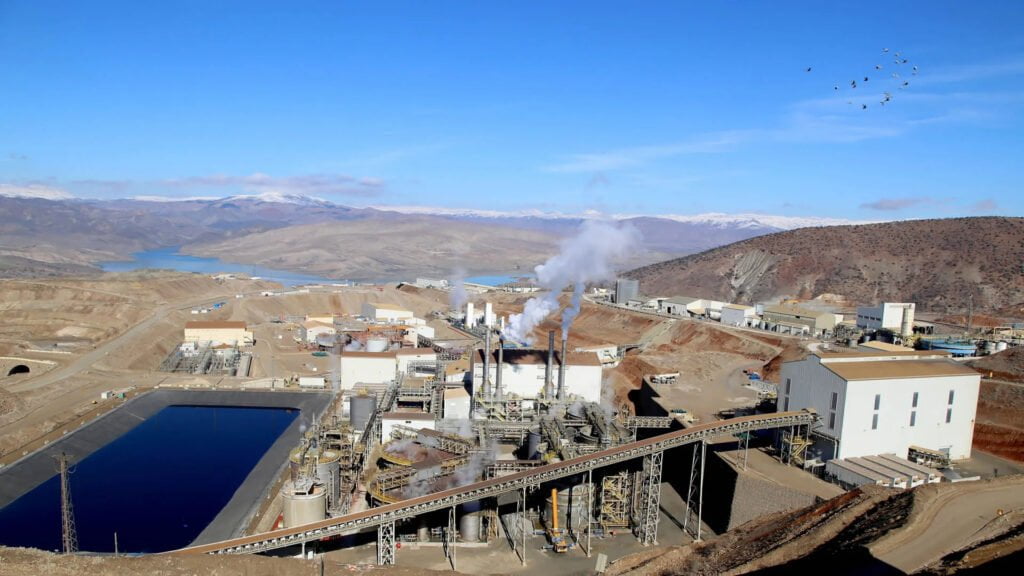Have you ever wondered how much a ruby auction could fetch?
The answer might surprise you, as Gemfields recently sold almost $69 million worth of mixed-quality rubies at their June auction. Let’s dig into the nuances of this incredible event and explore what it means for the gemstone market at large. Buckle up; you’re in for a fascinating journey through the world of precious stones.

This image is property of www.mining.com.
A Milestone Auction
Gemfields’ most recent ruby auction wasn’t just any ordinary sale. This event marked the 10th anniversary of their first ruby auction from the Montepuez mine in Mozambique, considered the richest known deposit of rubies in the world. Such milestones invite not just a celebration but also reflection on the past decade and what has changed.
A Decade in Review
Over the last ten years, Gemfields has evolved enormously. The transaction involved offered a glimpse of an industry that’s both highly lucrative and fraught with challenges. But who is behind the success? Gemfields owns 75% of the Montepuez operation, with the remaining 25% held by its local partner, Mwiriti. Quite the dynamic duo! This collaboration has been instrumental in bringing these rubies to market and, quite literally, putting Mozambique on the map.
The Numbers Game
Now, let’s talk numbers. An impressive 97% of the ruby offerings were sold. That’s almost a clean sweep! While the final haul was just below $69 million, it’s worth noting that last year around the same time, the figure was a touch higher at $80.4 million. And no, the excitement doesn’t just end there. This all happened while Gemfields’ Managing Director of Product and Sales, Adrian Banks, proudly announced an average selling price of $300 per carat. Although slightly below December’s sale at $69.5 million, it still stands as a testament to the value these precious stones hold.
The Looming Comparisons
One of the curiosities about such auctions is the desire to draw comparisons. Adrian Banks, however, was quick to remind everyone that auction results vary and shouldn’t be directly compared. It makes sense if you think about it. Market conditions change, and so do the forces of supply and demand. You wouldn’t compare apples to oranges, so why compare different auctions?
Facing Industry Challenges
Even with all this success, Gemfields acknowledges the broader challenges facing the precious gemstones industry. The diamond sector, for example, continues to face significant headwinds. But what exactly are these challenges?
The Diamond Dilemma
The diamond industry suffered immensely last year. A global decline in demand for rough gemstones not only affected prices but rippled through the entire jewelry market. Economic troubles in major markets like China and the US played a significant role. When the giants sneeze, everyone gets a cold.
Lab-Made Phenomenon
Add to this the rise of lab-grown diamonds, and the picture becomes even more complex. These lab-created wonders are increasingly popular among cost-conscious consumers, which prompted jewelry retailers to take a more cautious approach. This shift had a tangible impact: diamonds and colored gemstones saw a dip in sales, leading to a profit decline for top producers. These were rocky times, not just figuratively but literally!
Gemfields’ Own Struggles
For Gemfields, this wasn’t just a distant thunderstorm. The company’s pre-tax profit nosedived an alarming 86% last year. Several factors contributed to this decline, including the cancellation of an emerald auction in November. Adding to this was the lower number of carats sold overall and a write-down in its platinum group metals investments. It’s a classic domino effect; one challenge leads to another, and soon enough, the whole structure feels unstable.

This image is property of www.mining.com.
The Bruce Cleaver Factor
Amidst such turbulence, a lighthouse often emerges, guiding the way. Enter Bruce Cleaver, former chief executive of De Beers, who Gemfields recently appointed as chair and independent non-executive director. Cleaver’s experience is expected to bring a breath of fresh air into the company and provide much-needed direction.
The Fresh Outlook
So what does the future look like with Cleaver steering the ship? According to Adrian Banks, the auction results showcased strong confidence from loyal customers in both the product offering and the auction platform. This result, Banks hopes, will offer good comfort to other stakeholders in the sector. It’s like pulling over to the side of the road to readjust your GPS; you may lose a bit of time but gain much-needed clarity.
Market Safety Net
Given the continuous emergence of lab-grown alternatives, some might fret over the future of mined gemstones. However, Gemfields believes that the colored gemstone market remains relatively safe. Man-made rubies and emeralds have existed for over 120 years and yet haven’t significantly eroded the market for mined gemstones. You could say the mined segment has a kind of “vintage charm” that synthetic gems can’t quite replicate.
Market Reactions
Besides the sale figures, what’s the buzz on the trading floor? Shares in Gemfields spiked more than 5% on the news, trading at 13p in London mid-afternoon. The excitement wasn’t just localized; the stock closed 4.9% higher in Johannesburg, lifting Gemfields’ market capitalization to a whopping 3.49 billion South African rand (about $195 million). These are moments when you realize numbers can tell quite the story!

This image is property of www.mining.com.
Contextualizing the Gemfields Success
So where does this leave us? To fully appreciate Gemfields’ achievement, it’s crucial to contextualize it within the broader landscape. This isn’t just about selling rubies; it’s about sustaining an industry, overcoming challenges, and continually pushing for success.
Gemfields’ Versatility
Aside from rubies, Gemfields also operates the Kagem mine in Zambia, producing emeralds. The versatility helps cushion them against sector-specific downturns. Imagine if your investment portfolio had only tech stocks, you’d be biting your nails every time Silicon Valley hiccupped. Diversification, whether in investing or mining, provides an essential buffer.
Global Markets and Trends
Moreover, global economic conditions put everyone on edge. The US and China grappling with economic challenges also meant that disposable incomes were tighter. When people tighten their belts, luxury items like gemstones are often the first to be struck off the shopping list. Understanding these macroeconomic indicators helps to grasp why the $69 million figure is quite the achievement.
Cautious Optimism
It’s also worth noting that Banks’ cautious optimism is deeply rooted in industry practices. The company astutely noted that while the diamond industry struggles, colored gemstones seem relatively insulated. There’s a genuine market resilience for rubies and emeralds, one that has withstood the test of over a century.
The Bigger Picture
Gemstones aren’t just a fashion statement; they’re a complex commodity affected by global trends, market demands, and even technological advancements. Lab-grown diamonds, for example, have made everyone rethink what’s “precious.” But some things remain unchanged. The allure of a natural ruby or emerald, mined from the depths of the Earth, offers a kind of luster that synthetic versions can’t quite imitate.
A Future View
Looking forward, it’s worth considering what Gemfields’ continued success can teach us about resilience and adaptability. They’ve managed to not just survive, but thrive in an environment where many would falter. It’s like watching a skilled surfer navigate choppy waters; the moves may seem effortless, but you know there’s a lifetime of practice behind it.
Table of Auction Figures
To help in visualizing the data, here’s a breakdown of key figures from Gemfields’ recent ruby auctions:
| Date | Auction Value (in millions, USD) | Average Price per Carat (USD) |
|---|---|---|
| June 2023 | 80.4 | X |
| December 2023 | 69.5 | Y |
| June 2024 | 68.9 | 300 |
(Note: ‘X’ and ‘Y’ represent values that could be filled in if available for comparison.)

This image is property of www.mining.com.
Final Thoughts
A $69 million ruby auction is no small feat, especially when you consider the hurdles Gemfields has faced along the way. This event is a microcosm of larger industry trends, economic factors, and market nuances. From the rise of lab-grown alternatives to the intricacies of global economic health, understanding these factors helps paint a fuller picture.
And so, whether you’re a gem enthusiast, market analyst, or just someone intrigued by the glittering world of precious stones, this auction offers a fascinating glimpse into an ever-evolving industry. Here’s to Gemfields’ steadfastness and perhaps, to even more record-breaking auctions in the future. Who knows? Maybe next time, they’ll break the $70 million mark.
